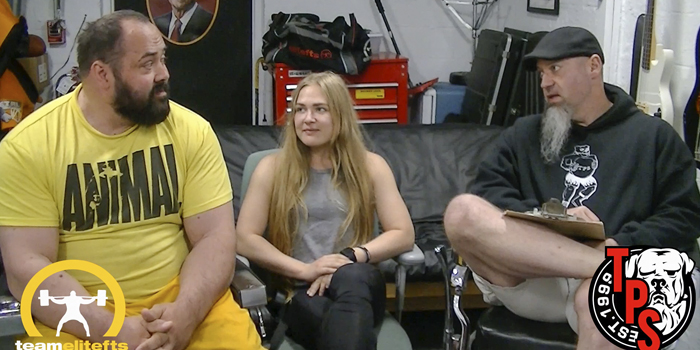
I was fortunate enough to sit down for a second time with Russian powerlifter Andrey Malanichev as a continuation of my initial interview to take a deeper dive into how he structures his training program. In this conversation (part two of two), we explore Andrey’s personal fitness philosophy that guides his approach to training, again with interpretation support from Yana.
It’s in discussions like these that I am reminded of what a nice guy Andrey is, and how willing he is to share his expertise to support the development of other powerlifters and young athletes. Having personally been around powerlifters for years, I can attest to the fact that this is both rare and refreshing to find.
WATCH: Andrey Malanichev — RPR, Powerlifting Culture, Injury Prevention
Andrey starts off by walking me through his overarching training structure. He generally begins his preparatory work 12-16 weeks out from competitions and subdivides training into three basic parts. The first part consists of lighter, volume training. To put Andrey’s strength and power into perspective, however, keep in mind that an example of a “light” workout for Andrey is five sets of five with 500 pounds in the squat. Yet, the relatively low number of reps still allows him to fully recover after these types of lighter workouts.
Andrey Malanichev Interview for EliteFTS Part 2 June 12 2018 from TPS Method on Vimeo.
He then transitions to part two of his program: the strength training cycle. Although this process does focus more on strength, Andrey lowers the number of reps and sets per session and is still nowhere close to his maximum weight.
Finally, part three of his training program arrives as Andrey gets closer to his peak week. However, he still does not perform his high-weight training sessions at 100%, but rather somewhere around 85%. These kinds of sessions also never involve singles. Typically, Andrey performs heavy squat and deadlift sessions three weeks prior to a competition, waiting to perform heavy bench press sessions until two weeks prior to a competition. Furthermore, Andrey also takes one week off before competing to prevent injury, maintain strength, and avoid straining his body.
When I ask about his training schedule, it is clear that he has a strict, yet simple routine in place. He typically squats on Mondays, bench presses on Wednesdays, and deadlifts on Fridays. Sometimes he also performs the Sling Shot bench press on Saturdays, but only when he does not train on Fridays. As he explains, this is because he only trains his deadlift once every two weeks due to longer recovery times. When it comes to the slingshot, he always exceeds his previous set of 30 kilos with a high percentage. The key to Andrey’s training schedule is all about balance — if he squatted heavy on Monday, for instance, he would do a lighter bench press on Wednesday, and then move forward with a heavy deadlift on Friday. The alternation of lighter and heavier sessions (“waves”, as he calls them) is critical to allow his body to recover when he is training.
I probe Andrey several times regarding accessory work, but he reiterates that he does not really perform other exercises, such as rows or triceps work, during his training cycle. Rather, his approach to training is simple, streamlined, and effective for his body. In fact, Andrey explains that his training philosophy is all about improving his results each time. He is very self-concentrated and avoids wasting time worrying about other athletes or competitors. His goal is just to create a better version of himself.
As I wrap up the interview, I joke with Andrey, asking if he would share any top-secret Russian insights that have helped him get to where he is today. Despite his chuckle, Andrey provides a serious answer that rings true: the secret is to find the program that suits you. Because everyone is different, we cannot take a “one-size-fits-all” approach to training. Indeed, if a one-size-fits-all approach did exist, then everyone would be a world-record holder.
In conclusion:
- Find the program that works for you instead of just “jumping on the bandwagon”
- Strive for balance and longevity by alternating heavy and light training sessions
- Listen to your body and focus on being a better version of yourself
By the Minute
- (2:15) Summary of training approach
- (2:40) Volume training
- (3:13) Strength training cycle
- (3:26) Weekly training schedule (squat, bench press, deadlift)
- (4:56) Peak week training
- (7:18) Training philosophy and personal goals
- (8:20) Andrey’s secret to training
- (10:21) Interview recap










